-
EXECUTIVE SUMMARY
-
1.1.
-
Market Overview
-
Key Findings
-
Market Segmentation
-
1.4.
-
Competitive Landscape
-
Challenges and Opportunities
-
Future
-
Outlook
-
MARKET INTRODUCTION
-
Definition
-
Scope of the study
- Research Objective
- Assumption
- Limitations
-
RESEARCH METHODOLOGY
-
Overview
-
3.2.
-
Data Mining
-
Secondary Research
-
Primary Research
- Breakdown of Primary
-
3.4.1.
-
Primary Interviews and Information Gathering Process
-
Respondents
-
Forecasting Model
-
Market Size Estimation
- Top-Down Approach
-
3.6.1.
-
Bottom-Up Approach
-
Data Triangulation
-
Validation
-
MARKET DYNAMICS
-
Overview
-
Drivers
-
Restraints
-
Opportunities
-
MARKET
-
FACTOR ANALYSIS
-
Value chain Analysis
-
Porter''s Five Forces
- Bargaining Power of Suppliers
- Bargaining Power
- Threat of New Entrants
- Threat of Substitutes
- Intensity of Rivalry
-
Analysis
-
of Buyers
-
COVID-19 Impact Analysis
- Regional Impact
- Opportunity and
-
5.3.1.
-
Market Impact Analysis
-
Threat Analysis
-
THIN FILM PHOTOVOLTAIC MARKET, BY TECHNOLOGY
-
(USD BILLION)
-
Cadmium Telluride
-
Copper Indium Gallium Selenide
-
Organic Photovoltaics
-
Amorphous Silicon
-
THIN FILM
-
PHOTOVOLTAIC MARKET, BY APPLICATION (USD BILLION)
-
Residential
-
7.2.
-
Commercial
-
Utility Scale
-
Building-Integrated Photovoltaics
-
THIN FILM PHOTOVOLTAIC MARKET, BY END USE (USD BILLION)
-
Energy
-
Generation
-
Consumer Electronics
-
Automotive
-
Portable
-
Devices
-
THIN FILM PHOTOVOLTAIC MARKET, BY INSTALLATION TYPE (USD BILLION)
-
Rooftop Installation
-
Ground-Mounted Installation
-
9.3.
-
Building Facade Installation
-
THIN FILM PHOTOVOLTAIC MARKET, BY REGIONAL
-
(USD BILLION)
-
North America
- US
- Canada
-
Europe
- Germany
- UK
- France
- Italy
- Spain
- Rest of Europe
-
10.2.4.
-
Russia
-
APAC
- China
- India
- Japan
- Malaysia
- Thailand
- Indonesia
- Rest of APAC
-
10.3.4.
-
South Korea
-
South America
- Brazil
- Argentina
- Rest of South America
-
10.4.2.
-
Mexico
-
MEA
- GCC Countries
- South Africa
- Rest of MEA
-
COMPETITIVE LANDSCAPE
-
Overview
-
11.2.
-
Competitive Analysis
-
Market share Analysis
-
Major Growth
-
Strategy in the Thin Film Photovoltaic Market
-
Competitive Benchmarking
-
Leading Players in Terms of Number of Developments in the Thin Film
-
Photovoltaic Market
-
Key developments and growth strategies
- Merger & Acquisitions
- Joint Ventures
-
11.7.1.
-
New Product Launch/Service Deployment
-
Major Players Financial Matrix
- Major Players R&D Expenditure. 2023
-
11.8.1.
-
Sales and Operating Income
-
COMPANY PROFILES
-
Mitsubishi Electric
- Financial
- Products Offered
- Key Developments
- Key Strategies
-
Overview
-
12.1.4.
-
SWOT Analysis
-
First Solar
- Products Offered
- Key Developments
- SWOT Analysis
- Key Strategies
-
12.2.1.
-
Financial Overview
-
Soltec
- Financial Overview
- Products Offered
- Key Developments
- SWOT Analysis
- Key Strategies
-
Senergie
- Financial Overview
- Products Offered
- Key Developments
- SWOT Analysis
- Key Strategies
-
JinkoSolar
- Financial Overview
- Products Offered
- Key
- SWOT Analysis
- Key Strategies
- Financial Overview
- Products Offered
- Key Developments
- SWOT Analysis
- Key Strategies
-
Developments
-
12.6.
-
Trina Solar
-
Solar Frontier
- Financial Overview
- Products
- Key Developments
- SWOT Analysis
-
Offered
-
12.7.5.
-
Key Strategies
-
Sharp Corporation
- Financial Overview
- Products Offered
- Key Developments
- SWOT Analysis
- Key Strategies
-
NexTracker
- Financial Overview
- Products Offered
- Key Developments
- SWOT
- Key Strategies
-
Analysis
-
Canadian Solar
- Products Offered
- Key Developments
- SWOT Analysis
- Key Strategies
-
12.10.1.
-
Financial Overview
-
Vikram Solar
- Financial Overview
- Products Offered
- SWOT Analysis
- Key Strategies
-
12.11.3.
-
Key Developments
-
SunPower
- Financial Overview
- Products Offered
- Key Developments
- SWOT Analysis
- Key
-
Strategies
-
JA Solar
- Financial Overview
- Key Developments
- SWOT Analysis
- Key Strategies
-
12.13.2.
-
Products Offered
-
BASF
- Financial Overview
- Products Offered
- Key Developments
- SWOT
- Key Strategies
-
Analysis
-
Hanwha Q CELLS
- Products Offered
- Key Developments
- SWOT Analysis
- Key Strategies
-
12.15.1.
-
Financial Overview
-
APPENDIX
-
References
-
Related Reports
-
LIST OF TABLES
-
TABLE
-
LIST OF ASSUMPTIONS
-
NORTH AMERICA THIN FILM PHOTOVOLTAIC MARKET
-
SIZE ESTIMATES & FORECAST, BY TECHNOLOGY, 2019-2032 (USD BILLIONS)
-
TABLE
-
NORTH AMERICA THIN FILM PHOTOVOLTAIC MARKET SIZE ESTIMATES & FORECAST, BY
-
APPLICATION, 2019-2032 (USD BILLIONS)
-
NORTH AMERICA THIN FILM PHOTOVOLTAIC
-
MARKET SIZE ESTIMATES & FORECAST, BY END USE, 2019-2032 (USD BILLIONS)
-
TABLE
-
NORTH AMERICA THIN FILM PHOTOVOLTAIC MARKET SIZE ESTIMATES & FORECAST, BY
-
INSTALLATION TYPE, 2019-2032 (USD BILLIONS)
-
NORTH AMERICA THIN FILM
-
PHOTOVOLTAIC MARKET SIZE ESTIMATES & FORECAST, BY REGIONAL, 2019-2032 (USD BILLIONS)
-
US THIN FILM PHOTOVOLTAIC MARKET SIZE ESTIMATES & FORECAST, BY
-
TECHNOLOGY, 2019-2032 (USD BILLIONS)
-
US THIN FILM PHOTOVOLTAIC MARKET
-
SIZE ESTIMATES & FORECAST, BY APPLICATION, 2019-2032 (USD BILLIONS)
-
TABLE
-
US THIN FILM PHOTOVOLTAIC MARKET SIZE ESTIMATES & FORECAST, BY END USE, 2019-2032
-
(USD BILLIONS)
-
US THIN FILM PHOTOVOLTAIC MARKET SIZE ESTIMATES &
-
FORECAST, BY INSTALLATION TYPE, 2019-2032 (USD BILLIONS)
-
US THIN
-
FILM PHOTOVOLTAIC MARKET SIZE ESTIMATES & FORECAST, BY REGIONAL, 2019-2032 (USD
-
BILLIONS)
-
CANADA THIN FILM PHOTOVOLTAIC MARKET SIZE ESTIMATES &
-
FORECAST, BY TECHNOLOGY, 2019-2032 (USD BILLIONS)
-
CANADA THIN FILM
-
PHOTOVOLTAIC MARKET SIZE ESTIMATES & FORECAST, BY APPLICATION, 2019-2032 (USD
-
BILLIONS)
-
CANADA THIN FILM PHOTOVOLTAIC MARKET SIZE ESTIMATES &
-
FORECAST, BY END USE, 2019-2032 (USD BILLIONS)
-
CANADA THIN FILM
-
PHOTOVOLTAIC MARKET SIZE ESTIMATES & FORECAST, BY INSTALLATION TYPE, 2019-2032
-
(USD BILLIONS)
-
CANADA THIN FILM PHOTOVOLTAIC MARKET SIZE ESTIMATES
-
& FORECAST, BY REGIONAL, 2019-2032 (USD BILLIONS)
-
EUROPE THIN
-
FILM PHOTOVOLTAIC MARKET SIZE ESTIMATES & FORECAST, BY TECHNOLOGY, 2019-2032
-
(USD BILLIONS)
-
EUROPE THIN FILM PHOTOVOLTAIC MARKET SIZE ESTIMATES
-
& FORECAST, BY APPLICATION, 2019-2032 (USD BILLIONS)
-
EUROPE
-
THIN FILM PHOTOVOLTAIC MARKET SIZE ESTIMATES & FORECAST, BY END USE, 2019-2032
-
(USD BILLIONS)
-
EUROPE THIN FILM PHOTOVOLTAIC MARKET SIZE ESTIMATES
-
& FORECAST, BY INSTALLATION TYPE, 2019-2032 (USD BILLIONS)
-
EUROPE
-
THIN FILM PHOTOVOLTAIC MARKET SIZE ESTIMATES & FORECAST, BY REGIONAL, 2019-2032
-
(USD BILLIONS)
-
GERMANY THIN FILM PHOTOVOLTAIC MARKET SIZE ESTIMATES
-
& FORECAST, BY TECHNOLOGY, 2019-2032 (USD BILLIONS)
-
GERMANY
-
THIN FILM PHOTOVOLTAIC MARKET SIZE ESTIMATES & FORECAST, BY APPLICATION, 2019-2032
-
(USD BILLIONS)
-
GERMANY THIN FILM PHOTOVOLTAIC MARKET SIZE ESTIMATES
-
& FORECAST, BY END USE, 2019-2032 (USD BILLIONS)
-
GERMANY THIN
-
FILM PHOTOVOLTAIC MARKET SIZE ESTIMATES & FORECAST, BY INSTALLATION TYPE, 2019-2032
-
(USD BILLIONS)
-
GERMANY THIN FILM PHOTOVOLTAIC MARKET SIZE ESTIMATES
-
& FORECAST, BY REGIONAL, 2019-2032 (USD BILLIONS)
-
UK THIN FILM
-
PHOTOVOLTAIC MARKET SIZE ESTIMATES & FORECAST, BY TECHNOLOGY, 2019-2032 (USD
-
BILLIONS)
-
UK THIN FILM PHOTOVOLTAIC MARKET SIZE ESTIMATES &
-
FORECAST, BY APPLICATION, 2019-2032 (USD BILLIONS)
-
UK THIN FILM
-
PHOTOVOLTAIC MARKET SIZE ESTIMATES & FORECAST, BY END USE, 2019-2032 (USD BILLIONS)
-
UK THIN FILM PHOTOVOLTAIC MARKET SIZE ESTIMATES & FORECAST,
-
BY INSTALLATION TYPE, 2019-2032 (USD BILLIONS)
-
UK THIN FILM PHOTOVOLTAIC
-
MARKET SIZE ESTIMATES & FORECAST, BY REGIONAL, 2019-2032 (USD BILLIONS)
-
FRANCE THIN FILM PHOTOVOLTAIC MARKET SIZE ESTIMATES & FORECAST,
-
BY TECHNOLOGY, 2019-2032 (USD BILLIONS)
-
FRANCE THIN FILM PHOTOVOLTAIC
-
MARKET SIZE ESTIMATES & FORECAST, BY APPLICATION, 2019-2032 (USD BILLIONS)
-
FRANCE THIN FILM PHOTOVOLTAIC MARKET SIZE ESTIMATES & FORECAST,
-
BY END USE, 2019-2032 (USD BILLIONS)
-
FRANCE THIN FILM PHOTOVOLTAIC
-
MARKET SIZE ESTIMATES & FORECAST, BY INSTALLATION TYPE, 2019-2032 (USD BILLIONS)
-
FRANCE THIN FILM PHOTOVOLTAIC MARKET SIZE ESTIMATES & FORECAST,
-
BY REGIONAL, 2019-2032 (USD BILLIONS)
-
RUSSIA THIN FILM PHOTOVOLTAIC
-
MARKET SIZE ESTIMATES & FORECAST, BY TECHNOLOGY, 2019-2032 (USD BILLIONS)
-
RUSSIA THIN FILM PHOTOVOLTAIC MARKET SIZE ESTIMATES & FORECAST,
-
BY APPLICATION, 2019-2032 (USD BILLIONS)
-
RUSSIA THIN FILM PHOTOVOLTAIC
-
MARKET SIZE ESTIMATES & FORECAST, BY END USE, 2019-2032 (USD BILLIONS)
-
TABLE
-
RUSSIA THIN FILM PHOTOVOLTAIC MARKET SIZE ESTIMATES & FORECAST, BY INSTALLATION
-
TYPE, 2019-2032 (USD BILLIONS)
-
RUSSIA THIN FILM PHOTOVOLTAIC MARKET
-
SIZE ESTIMATES & FORECAST, BY REGIONAL, 2019-2032 (USD BILLIONS)
-
TABLE
-
ITALY THIN FILM PHOTOVOLTAIC MARKET SIZE ESTIMATES & FORECAST, BY TECHNOLOGY,
-
ITALY THIN FILM PHOTOVOLTAIC MARKET SIZE
-
ESTIMATES & FORECAST, BY APPLICATION, 2019-2032 (USD BILLIONS)
-
TABLE 44.
-
ITALY THIN FILM PHOTOVOLTAIC MARKET SIZE ESTIMATES & FORECAST, BY END USE, 2019-2032
-
(USD BILLIONS)
-
ITALY THIN FILM PHOTOVOLTAIC MARKET SIZE ESTIMATES
-
& FORECAST, BY INSTALLATION TYPE, 2019-2032 (USD BILLIONS)
-
ITALY
-
THIN FILM PHOTOVOLTAIC MARKET SIZE ESTIMATES & FORECAST, BY REGIONAL, 2019-2032
-
(USD BILLIONS)
-
SPAIN THIN FILM PHOTOVOLTAIC MARKET SIZE ESTIMATES
-
& FORECAST, BY TECHNOLOGY, 2019-2032 (USD BILLIONS)
-
SPAIN THIN
-
FILM PHOTOVOLTAIC MARKET SIZE ESTIMATES & FORECAST, BY APPLICATION, 2019-2032
-
(USD BILLIONS)
-
SPAIN THIN FILM PHOTOVOLTAIC MARKET SIZE ESTIMATES
-
& FORECAST, BY END USE, 2019-2032 (USD BILLIONS)
-
SPAIN THIN
-
FILM PHOTOVOLTAIC MARKET SIZE ESTIMATES & FORECAST, BY INSTALLATION TYPE, 2019-2032
-
(USD BILLIONS)
-
SPAIN THIN FILM PHOTOVOLTAIC MARKET SIZE ESTIMATES
-
& FORECAST, BY REGIONAL, 2019-2032 (USD BILLIONS)
-
REST OF EUROPE
-
THIN FILM PHOTOVOLTAIC MARKET SIZE ESTIMATES & FORECAST, BY TECHNOLOGY, 2019-2032
-
(USD BILLIONS)
-
REST OF EUROPE THIN FILM PHOTOVOLTAIC MARKET SIZE
-
ESTIMATES & FORECAST, BY APPLICATION, 2019-2032 (USD BILLIONS)
-
TABLE 54.
-
REST OF EUROPE THIN FILM PHOTOVOLTAIC MARKET SIZE ESTIMATES & FORECAST, BY END
-
USE, 2019-2032 (USD BILLIONS)
-
REST OF EUROPE THIN FILM PHOTOVOLTAIC
-
MARKET SIZE ESTIMATES & FORECAST, BY INSTALLATION TYPE, 2019-2032 (USD BILLIONS)
-
REST OF EUROPE THIN FILM PHOTOVOLTAIC MARKET SIZE ESTIMATES &
-
FORECAST, BY REGIONAL, 2019-2032 (USD BILLIONS)
-
APAC THIN FILM PHOTOVOLTAIC
-
MARKET SIZE ESTIMATES & FORECAST, BY TECHNOLOGY, 2019-2032 (USD BILLIONS)
-
APAC THIN FILM PHOTOVOLTAIC MARKET SIZE ESTIMATES & FORECAST, BY
-
APPLICATION, 2019-2032 (USD BILLIONS)
-
APAC THIN FILM PHOTOVOLTAIC
-
MARKET SIZE ESTIMATES & FORECAST, BY END USE, 2019-2032 (USD BILLIONS)
-
TABLE
-
APAC THIN FILM PHOTOVOLTAIC MARKET SIZE ESTIMATES & FORECAST, BY INSTALLATION
-
TYPE, 2019-2032 (USD BILLIONS)
-
APAC THIN FILM PHOTOVOLTAIC MARKET
-
SIZE ESTIMATES & FORECAST, BY REGIONAL, 2019-2032 (USD BILLIONS)
-
TABLE
-
CHINA THIN FILM PHOTOVOLTAIC MARKET SIZE ESTIMATES & FORECAST, BY TECHNOLOGY,
-
CHINA THIN FILM PHOTOVOLTAIC MARKET SIZE
-
ESTIMATES & FORECAST, BY APPLICATION, 2019-2032 (USD BILLIONS)
-
TABLE 64.
-
CHINA THIN FILM PHOTOVOLTAIC MARKET SIZE ESTIMATES & FORECAST, BY END USE, 2019-2032
-
(USD BILLIONS)
-
CHINA THIN FILM PHOTOVOLTAIC MARKET SIZE ESTIMATES
-
& FORECAST, BY INSTALLATION TYPE, 2019-2032 (USD BILLIONS)
-
CHINA
-
THIN FILM PHOTOVOLTAIC MARKET SIZE ESTIMATES & FORECAST, BY REGIONAL, 2019-2032
-
(USD BILLIONS)
-
INDIA THIN FILM PHOTOVOLTAIC MARKET SIZE ESTIMATES
-
& FORECAST, BY TECHNOLOGY, 2019-2032 (USD BILLIONS)
-
INDIA THIN
-
FILM PHOTOVOLTAIC MARKET SIZE ESTIMATES & FORECAST, BY APPLICATION, 2019-2032
-
(USD BILLIONS)
-
INDIA THIN FILM PHOTOVOLTAIC MARKET SIZE ESTIMATES
-
& FORECAST, BY END USE, 2019-2032 (USD BILLIONS)
-
INDIA THIN
-
FILM PHOTOVOLTAIC MARKET SIZE ESTIMATES & FORECAST, BY INSTALLATION TYPE, 2019-2032
-
(USD BILLIONS)
-
INDIA THIN FILM PHOTOVOLTAIC MARKET SIZE ESTIMATES
-
& FORECAST, BY REGIONAL, 2019-2032 (USD BILLIONS)
-
JAPAN THIN
-
FILM PHOTOVOLTAIC MARKET SIZE ESTIMATES & FORECAST, BY TECHNOLOGY, 2019-2032
-
(USD BILLIONS)
-
JAPAN THIN FILM PHOTOVOLTAIC MARKET SIZE ESTIMATES
-
& FORECAST, BY APPLICATION, 2019-2032 (USD BILLIONS)
-
JAPAN THIN
-
FILM PHOTOVOLTAIC MARKET SIZE ESTIMATES & FORECAST, BY END USE, 2019-2032 (USD
-
BILLIONS)
-
JAPAN THIN FILM PHOTOVOLTAIC MARKET SIZE ESTIMATES &
-
FORECAST, BY INSTALLATION TYPE, 2019-2032 (USD BILLIONS)
-
JAPAN THIN
-
FILM PHOTOVOLTAIC MARKET SIZE ESTIMATES & FORECAST, BY REGIONAL, 2019-2032 (USD
-
BILLIONS)
-
SOUTH KOREA THIN FILM PHOTOVOLTAIC MARKET SIZE ESTIMATES
-
& FORECAST, BY TECHNOLOGY, 2019-2032 (USD BILLIONS)
-
SOUTH KOREA
-
THIN FILM PHOTOVOLTAIC MARKET SIZE ESTIMATES & FORECAST, BY APPLICATION, 2019-2032
-
(USD BILLIONS)
-
SOUTH KOREA THIN FILM PHOTOVOLTAIC MARKET SIZE ESTIMATES
-
& FORECAST, BY END USE, 2019-2032 (USD BILLIONS)
-
SOUTH KOREA
-
THIN FILM PHOTOVOLTAIC MARKET SIZE ESTIMATES & FORECAST, BY INSTALLATION TYPE,
-
SOUTH KOREA THIN FILM PHOTOVOLTAIC MARKET
-
SIZE ESTIMATES & FORECAST, BY REGIONAL, 2019-2032 (USD BILLIONS)
-
TABLE
-
MALAYSIA THIN FILM PHOTOVOLTAIC MARKET SIZE ESTIMATES & FORECAST, BY TECHNOLOGY,
-
MALAYSIA THIN FILM PHOTOVOLTAIC MARKET
-
SIZE ESTIMATES & FORECAST, BY APPLICATION, 2019-2032 (USD BILLIONS)
-
TABLE
-
MALAYSIA THIN FILM PHOTOVOLTAIC MARKET SIZE ESTIMATES & FORECAST, BY END
-
USE, 2019-2032 (USD BILLIONS)
-
MALAYSIA THIN FILM PHOTOVOLTAIC MARKET
-
SIZE ESTIMATES & FORECAST, BY INSTALLATION TYPE, 2019-2032 (USD BILLIONS)
-
MALAYSIA THIN FILM PHOTOVOLTAIC MARKET SIZE ESTIMATES & FORECAST,
-
BY REGIONAL, 2019-2032 (USD BILLIONS)
-
THAILAND THIN FILM PHOTOVOLTAIC
-
MARKET SIZE ESTIMATES & FORECAST, BY TECHNOLOGY, 2019-2032 (USD BILLIONS)
-
THAILAND THIN FILM PHOTOVOLTAIC MARKET SIZE ESTIMATES & FORECAST,
-
BY APPLICATION, 2019-2032 (USD BILLIONS)
-
THAILAND THIN FILM PHOTOVOLTAIC
-
MARKET SIZE ESTIMATES & FORECAST, BY END USE, 2019-2032 (USD BILLIONS)
-
TABLE
-
THAILAND THIN FILM PHOTOVOLTAIC MARKET SIZE ESTIMATES & FORECAST, BY INSTALLATION
-
TYPE, 2019-2032 (USD BILLIONS)
-
THAILAND THIN FILM PHOTOVOLTAIC MARKET
-
SIZE ESTIMATES & FORECAST, BY REGIONAL, 2019-2032 (USD BILLIONS)
-
TABLE
-
INDONESIA THIN FILM PHOTOVOLTAIC MARKET SIZE ESTIMATES & FORECAST, BY TECHNOLOGY,
-
INDONESIA THIN FILM PHOTOVOLTAIC MARKET
-
SIZE ESTIMATES & FORECAST, BY APPLICATION, 2019-2032 (USD BILLIONS)
-
TABLE
-
INDONESIA THIN FILM PHOTOVOLTAIC MARKET SIZE ESTIMATES & FORECAST, BY END
-
USE, 2019-2032 (USD BILLIONS)
-
INDONESIA THIN FILM PHOTOVOLTAIC MARKET
-
SIZE ESTIMATES & FORECAST, BY INSTALLATION TYPE, 2019-2032 (USD BILLIONS)
-
INDONESIA THIN FILM PHOTOVOLTAIC MARKET SIZE ESTIMATES & FORECAST,
-
BY REGIONAL, 2019-2032 (USD BILLIONS)
-
REST OF APAC THIN FILM PHOTOVOLTAIC
-
MARKET SIZE ESTIMATES & FORECAST, BY TECHNOLOGY, 2019-2032 (USD BILLIONS)
-
REST OF APAC THIN FILM PHOTOVOLTAIC MARKET SIZE ESTIMATES & FORECAST,
-
BY APPLICATION, 2019-2032 (USD BILLIONS)
-
REST OF APAC THIN FILM
-
PHOTOVOLTAIC MARKET SIZE ESTIMATES & FORECAST, BY END USE, 2019-2032 (USD BILLIONS)
-
REST OF APAC THIN FILM PHOTOVOLTAIC MARKET SIZE ESTIMATES &
-
FORECAST, BY INSTALLATION TYPE, 2019-2032 (USD BILLIONS)
-
REST OF
-
APAC THIN FILM PHOTOVOLTAIC MARKET SIZE ESTIMATES & FORECAST, BY REGIONAL, 2019-2032
-
(USD BILLIONS)
-
SOUTH AMERICA THIN FILM PHOTOVOLTAIC MARKET SIZE
-
ESTIMATES & FORECAST, BY TECHNOLOGY, 2019-2032 (USD BILLIONS)
-
TABLE 103.
-
SOUTH AMERICA THIN FILM PHOTOVOLTAIC MARKET SIZE ESTIMATES & FORECAST, BY APPLICATION,
-
SOUTH AMERICA THIN FILM PHOTOVOLTAIC MARKET
-
SIZE ESTIMATES & FORECAST, BY END USE, 2019-2032 (USD BILLIONS)
-
TABLE
-
SOUTH AMERICA THIN FILM PHOTOVOLTAIC MARKET SIZE ESTIMATES & FORECAST,
-
BY INSTALLATION TYPE, 2019-2032 (USD BILLIONS)
-
SOUTH AMERICA THIN
-
FILM PHOTOVOLTAIC MARKET SIZE ESTIMATES & FORECAST, BY REGIONAL, 2019-2032 (USD
-
BILLIONS)
-
BRAZIL THIN FILM PHOTOVOLTAIC MARKET SIZE ESTIMATES &
-
FORECAST, BY TECHNOLOGY, 2019-2032 (USD BILLIONS)
-
BRAZIL THIN FILM
-
PHOTOVOLTAIC MARKET SIZE ESTIMATES & FORECAST, BY APPLICATION, 2019-2032 (USD
-
BILLIONS)
-
BRAZIL THIN FILM PHOTOVOLTAIC MARKET SIZE ESTIMATES &
-
FORECAST, BY END USE, 2019-2032 (USD BILLIONS)
-
BRAZIL THIN FILM
-
PHOTOVOLTAIC MARKET SIZE ESTIMATES & FORECAST, BY INSTALLATION TYPE, 2019-2032
-
(USD BILLIONS)
-
BRAZIL THIN FILM PHOTOVOLTAIC MARKET SIZE ESTIMATES
-
& FORECAST, BY REGIONAL, 2019-2032 (USD BILLIONS)
-
MEXICO THIN
-
FILM PHOTOVOLTAIC MARKET SIZE ESTIMATES & FORECAST, BY TECHNOLOGY, 2019-2032
-
(USD BILLIONS)
-
MEXICO THIN FILM PHOTOVOLTAIC MARKET SIZE ESTIMATES
-
& FORECAST, BY APPLICATION, 2019-2032 (USD BILLIONS)
-
MEXICO
-
THIN FILM PHOTOVOLTAIC MARKET SIZE ESTIMATES & FORECAST, BY END USE, 2019-2032
-
(USD BILLIONS)
-
MEXICO THIN FILM PHOTOVOLTAIC MARKET SIZE ESTIMATES
-
& FORECAST, BY INSTALLATION TYPE, 2019-2032 (USD BILLIONS)
-
TABLE 116.
-
MEXICO THIN FILM PHOTOVOLTAIC MARKET SIZE ESTIMATES & FORECAST, BY REGIONAL,
-
ARGENTINA THIN FILM PHOTOVOLTAIC MARKET
-
SIZE ESTIMATES & FORECAST, BY TECHNOLOGY, 2019-2032 (USD BILLIONS)
-
TABLE
-
ARGENTINA THIN FILM PHOTOVOLTAIC MARKET SIZE ESTIMATES & FORECAST, BY APPLICATION,
-
ARGENTINA THIN FILM PHOTOVOLTAIC MARKET
-
SIZE ESTIMATES & FORECAST, BY END USE, 2019-2032 (USD BILLIONS)
-
TABLE
-
ARGENTINA THIN FILM PHOTOVOLTAIC MARKET SIZE ESTIMATES & FORECAST, BY INSTALLATION
-
TYPE, 2019-2032 (USD BILLIONS)
-
ARGENTINA THIN FILM PHOTOVOLTAIC
-
MARKET SIZE ESTIMATES & FORECAST, BY REGIONAL, 2019-2032 (USD BILLIONS)
-
REST OF SOUTH AMERICA THIN FILM PHOTOVOLTAIC MARKET SIZE ESTIMATES
-
& FORECAST, BY TECHNOLOGY, 2019-2032 (USD BILLIONS)
-
REST OF
-
SOUTH AMERICA THIN FILM PHOTOVOLTAIC MARKET SIZE ESTIMATES & FORECAST, BY APPLICATION,
-
REST OF SOUTH AMERICA THIN FILM PHOTOVOLTAIC
-
MARKET SIZE ESTIMATES & FORECAST, BY END USE, 2019-2032 (USD BILLIONS)
-
TABLE
-
REST OF SOUTH AMERICA THIN FILM PHOTOVOLTAIC MARKET SIZE ESTIMATES & FORECAST,
-
BY INSTALLATION TYPE, 2019-2032 (USD BILLIONS)
-
REST OF SOUTH AMERICA
-
THIN FILM PHOTOVOLTAIC MARKET SIZE ESTIMATES & FORECAST, BY REGIONAL, 2019-2032
-
(USD BILLIONS)
-
MEA THIN FILM PHOTOVOLTAIC MARKET SIZE ESTIMATES
-
& FORECAST, BY TECHNOLOGY, 2019-2032 (USD BILLIONS)
-
MEA THIN
-
FILM PHOTOVOLTAIC MARKET SIZE ESTIMATES & FORECAST, BY APPLICATION, 2019-2032
-
(USD BILLIONS)
-
MEA THIN FILM PHOTOVOLTAIC MARKET SIZE ESTIMATES
-
& FORECAST, BY END USE, 2019-2032 (USD BILLIONS)
-
MEA THIN FILM
-
PHOTOVOLTAIC MARKET SIZE ESTIMATES & FORECAST, BY INSTALLATION TYPE, 2019-2032
-
(USD BILLIONS)
-
MEA THIN FILM PHOTOVOLTAIC MARKET SIZE ESTIMATES
-
& FORECAST, BY REGIONAL, 2019-2032 (USD BILLIONS)
-
GCC COUNTRIES
-
THIN FILM PHOTOVOLTAIC MARKET SIZE ESTIMATES & FORECAST, BY TECHNOLOGY, 2019-2032
-
(USD BILLIONS)
-
GCC COUNTRIES THIN FILM PHOTOVOLTAIC MARKET SIZE
-
ESTIMATES & FORECAST, BY APPLICATION, 2019-2032 (USD BILLIONS)
-
TABLE 134.
-
GCC COUNTRIES THIN FILM PHOTOVOLTAIC MARKET SIZE ESTIMATES & FORECAST, BY END
-
USE, 2019-2032 (USD BILLIONS)
-
GCC COUNTRIES THIN FILM PHOTOVOLTAIC
-
MARKET SIZE ESTIMATES & FORECAST, BY INSTALLATION TYPE, 2019-2032 (USD BILLIONS)
-
GCC COUNTRIES THIN FILM PHOTOVOLTAIC MARKET SIZE ESTIMATES &
-
FORECAST, BY REGIONAL, 2019-2032 (USD BILLIONS)
-
SOUTH AFRICA THIN
-
FILM PHOTOVOLTAIC MARKET SIZE ESTIMATES & FORECAST, BY TECHNOLOGY, 2019-2032
-
(USD BILLIONS)
-
SOUTH AFRICA THIN FILM PHOTOVOLTAIC MARKET SIZE
-
ESTIMATES & FORECAST, BY APPLICATION, 2019-2032 (USD BILLIONS)
-
TABLE 139.
-
SOUTH AFRICA THIN FILM PHOTOVOLTAIC MARKET SIZE ESTIMATES & FORECAST, BY END
-
USE, 2019-2032 (USD BILLIONS)
-
SOUTH AFRICA THIN FILM PHOTOVOLTAIC
-
MARKET SIZE ESTIMATES & FORECAST, BY INSTALLATION TYPE, 2019-2032 (USD BILLIONS)
-
SOUTH AFRICA THIN FILM PHOTOVOLTAIC MARKET SIZE ESTIMATES &
-
FORECAST, BY REGIONAL, 2019-2032 (USD BILLIONS)
-
REST OF MEA THIN
-
FILM PHOTOVOLTAIC MARKET SIZE ESTIMATES & FORECAST, BY TECHNOLOGY, 2019-2032
-
(USD BILLIONS)
-
REST OF MEA THIN FILM PHOTOVOLTAIC MARKET SIZE ESTIMATES
-
& FORECAST, BY APPLICATION, 2019-2032 (USD BILLIONS)
-
REST OF
-
MEA THIN FILM PHOTOVOLTAIC MARKET SIZE ESTIMATES & FORECAST, BY END USE, 2019-2032
-
(USD BILLIONS)
-
REST OF MEA THIN FILM PHOTOVOLTAIC MARKET SIZE ESTIMATES
-
& FORECAST, BY INSTALLATION TYPE, 2019-2032 (USD BILLIONS)
-
TABLE 146.
-
REST OF MEA THIN FILM PHOTOVOLTAIC MARKET SIZE ESTIMATES & FORECAST, BY REGIONAL,
-
PRODUCT LAUNCH/PRODUCT DEVELOPMENT/APPROVAL
-
ACQUISITION/PARTNERSHIP
-
LIST OF FIGURES
-
MARKET SYNOPSIS
-
NORTH AMERICA THIN FILM PHOTOVOLTAIC
-
MARKET ANALYSIS
-
US THIN FILM PHOTOVOLTAIC MARKET ANALYSIS BY TECHNOLOGY
-
US THIN FILM PHOTOVOLTAIC MARKET ANALYSIS BY APPLICATION
-
FIGURE
-
US THIN FILM PHOTOVOLTAIC MARKET ANALYSIS BY END USE
-
US THIN
-
FILM PHOTOVOLTAIC MARKET ANALYSIS BY INSTALLATION TYPE
-
US THIN FILM
-
PHOTOVOLTAIC MARKET ANALYSIS BY REGIONAL
-
CANADA THIN FILM PHOTOVOLTAIC
-
MARKET ANALYSIS BY TECHNOLOGY
-
CANADA THIN FILM PHOTOVOLTAIC MARKET
-
ANALYSIS BY APPLICATION
-
CANADA THIN FILM PHOTOVOLTAIC MARKET ANALYSIS
-
BY END USE
-
CANADA THIN FILM PHOTOVOLTAIC MARKET ANALYSIS BY INSTALLATION
-
TYPE
-
CANADA THIN FILM PHOTOVOLTAIC MARKET ANALYSIS BY REGIONAL
-
EUROPE THIN FILM PHOTOVOLTAIC MARKET ANALYSIS
-
FIGURE 14.
-
GERMANY THIN FILM PHOTOVOLTAIC MARKET ANALYSIS BY TECHNOLOGY
-
GERMANY
-
THIN FILM PHOTOVOLTAIC MARKET ANALYSIS BY APPLICATION
-
GERMANY THIN
-
FILM PHOTOVOLTAIC MARKET ANALYSIS BY END USE
-
GERMANY THIN FILM
-
PHOTOVOLTAIC MARKET ANALYSIS BY INSTALLATION TYPE
-
GERMANY THIN
-
FILM PHOTOVOLTAIC MARKET ANALYSIS BY REGIONAL
-
UK THIN FILM PHOTOVOLTAIC
-
MARKET ANALYSIS BY TECHNOLOGY
-
UK THIN FILM PHOTOVOLTAIC MARKET
-
ANALYSIS BY APPLICATION
-
UK THIN FILM PHOTOVOLTAIC MARKET ANALYSIS
-
BY END USE
-
UK THIN FILM PHOTOVOLTAIC MARKET ANALYSIS BY INSTALLATION
-
TYPE
-
UK THIN FILM PHOTOVOLTAIC MARKET ANALYSIS BY REGIONAL
-
FRANCE THIN FILM PHOTOVOLTAIC MARKET ANALYSIS BY TECHNOLOGY
-
FIGURE
-
FRANCE THIN FILM PHOTOVOLTAIC MARKET ANALYSIS BY APPLICATION
-
FIGURE 26.
-
FRANCE THIN FILM PHOTOVOLTAIC MARKET ANALYSIS BY END USE
-
FRANCE
-
THIN FILM PHOTOVOLTAIC MARKET ANALYSIS BY INSTALLATION TYPE
-
FRANCE
-
THIN FILM PHOTOVOLTAIC MARKET ANALYSIS BY REGIONAL
-
RUSSIA THIN
-
FILM PHOTOVOLTAIC MARKET ANALYSIS BY TECHNOLOGY
-
RUSSIA THIN FILM
-
PHOTOVOLTAIC MARKET ANALYSIS BY APPLICATION
-
RUSSIA THIN FILM PHOTOVOLTAIC
-
MARKET ANALYSIS BY END USE
-
RUSSIA THIN FILM PHOTOVOLTAIC MARKET
-
ANALYSIS BY INSTALLATION TYPE
-
RUSSIA THIN FILM PHOTOVOLTAIC MARKET
-
ANALYSIS BY REGIONAL
-
ITALY THIN FILM PHOTOVOLTAIC MARKET ANALYSIS
-
BY TECHNOLOGY
-
ITALY THIN FILM PHOTOVOLTAIC MARKET ANALYSIS BY APPLICATION
-
ITALY THIN FILM PHOTOVOLTAIC MARKET ANALYSIS BY END USE
-
FIGURE
-
ITALY THIN FILM PHOTOVOLTAIC MARKET ANALYSIS BY INSTALLATION TYPE
-
FIGURE
-
ITALY THIN FILM PHOTOVOLTAIC MARKET ANALYSIS BY REGIONAL
-
SPAIN
-
THIN FILM PHOTOVOLTAIC MARKET ANALYSIS BY TECHNOLOGY
-
SPAIN THIN
-
FILM PHOTOVOLTAIC MARKET ANALYSIS BY APPLICATION
-
SPAIN THIN FILM
-
PHOTOVOLTAIC MARKET ANALYSIS BY END USE
-
SPAIN THIN FILM PHOTOVOLTAIC
-
MARKET ANALYSIS BY INSTALLATION TYPE
-
SPAIN THIN FILM PHOTOVOLTAIC
-
MARKET ANALYSIS BY REGIONAL
-
REST OF EUROPE THIN FILM PHOTOVOLTAIC
-
MARKET ANALYSIS BY TECHNOLOGY
-
REST OF EUROPE THIN FILM PHOTOVOLTAIC
-
MARKET ANALYSIS BY APPLICATION
-
REST OF EUROPE THIN FILM PHOTOVOLTAIC
-
MARKET ANALYSIS BY END USE
-
REST OF EUROPE THIN FILM PHOTOVOLTAIC
-
MARKET ANALYSIS BY INSTALLATION TYPE
-
REST OF EUROPE THIN FILM PHOTOVOLTAIC
-
MARKET ANALYSIS BY REGIONAL
-
APAC THIN FILM PHOTOVOLTAIC MARKET
-
ANALYSIS
-
CHINA THIN FILM PHOTOVOLTAIC MARKET ANALYSIS BY TECHNOLOGY
-
CHINA THIN FILM PHOTOVOLTAIC MARKET ANALYSIS BY APPLICATION
-
CHINA THIN FILM PHOTOVOLTAIC MARKET ANALYSIS BY END USE
-
FIGURE
-
CHINA THIN FILM PHOTOVOLTAIC MARKET ANALYSIS BY INSTALLATION TYPE
-
FIGURE
-
CHINA THIN FILM PHOTOVOLTAIC MARKET ANALYSIS BY REGIONAL
-
INDIA
-
THIN FILM PHOTOVOLTAIC MARKET ANALYSIS BY TECHNOLOGY
-
INDIA THIN
-
FILM PHOTOVOLTAIC MARKET ANALYSIS BY APPLICATION
-
INDIA THIN FILM
-
PHOTOVOLTAIC MARKET ANALYSIS BY END USE
-
INDIA THIN FILM PHOTOVOLTAIC
-
MARKET ANALYSIS BY INSTALLATION TYPE
-
INDIA THIN FILM PHOTOVOLTAIC
-
MARKET ANALYSIS BY REGIONAL
-
JAPAN THIN FILM PHOTOVOLTAIC MARKET
-
ANALYSIS BY TECHNOLOGY
-
JAPAN THIN FILM PHOTOVOLTAIC MARKET ANALYSIS
-
BY APPLICATION
-
JAPAN THIN FILM PHOTOVOLTAIC MARKET ANALYSIS BY
-
END USE
-
JAPAN THIN FILM PHOTOVOLTAIC MARKET ANALYSIS BY INSTALLATION
-
TYPE
-
JAPAN THIN FILM PHOTOVOLTAIC MARKET ANALYSIS BY REGIONAL
-
SOUTH KOREA THIN FILM PHOTOVOLTAIC MARKET ANALYSIS BY TECHNOLOGY
-
SOUTH KOREA THIN FILM PHOTOVOLTAIC MARKET ANALYSIS BY APPLICATION
-
SOUTH KOREA THIN FILM PHOTOVOLTAIC MARKET ANALYSIS BY END USE
-
FIGURE
-
SOUTH KOREA THIN FILM PHOTOVOLTAIC MARKET ANALYSIS BY INSTALLATION TYPE
-
SOUTH KOREA THIN FILM PHOTOVOLTAIC MARKET ANALYSIS BY REGIONAL
-
MALAYSIA THIN FILM PHOTOVOLTAIC MARKET ANALYSIS BY TECHNOLOGY
-
FIGURE
-
MALAYSIA THIN FILM PHOTOVOLTAIC MARKET ANALYSIS BY APPLICATION
-
FIGURE
-
MALAYSIA THIN FILM PHOTOVOLTAIC MARKET ANALYSIS BY END USE
-
FIGURE 73.
-
MALAYSIA THIN FILM PHOTOVOLTAIC MARKET ANALYSIS BY INSTALLATION TYPE
-
FIGURE
-
MALAYSIA THIN FILM PHOTOVOLTAIC MARKET ANALYSIS BY REGIONAL
-
FIGURE 75.
-
THAILAND THIN FILM PHOTOVOLTAIC MARKET ANALYSIS BY TECHNOLOGY
-
THAILAND
-
THIN FILM PHOTOVOLTAIC MARKET ANALYSIS BY APPLICATION
-
THAILAND
-
THIN FILM PHOTOVOLTAIC MARKET ANALYSIS BY END USE
-
THAILAND THIN
-
FILM PHOTOVOLTAIC MARKET ANALYSIS BY INSTALLATION TYPE
-
THAILAND
-
THIN FILM PHOTOVOLTAIC MARKET ANALYSIS BY REGIONAL
-
INDONESIA THIN
-
FILM PHOTOVOLTAIC MARKET ANALYSIS BY TECHNOLOGY
-
INDONESIA THIN
-
FILM PHOTOVOLTAIC MARKET ANALYSIS BY APPLICATION
-
INDONESIA THIN
-
FILM PHOTOVOLTAIC MARKET ANALYSIS BY END USE
-
INDONESIA THIN FILM
-
PHOTOVOLTAIC MARKET ANALYSIS BY INSTALLATION TYPE
-
INDONESIA THIN
-
FILM PHOTOVOLTAIC MARKET ANALYSIS BY REGIONAL
-
REST OF APAC THIN
-
FILM PHOTOVOLTAIC MARKET ANALYSIS BY TECHNOLOGY
-
REST OF APAC THIN
-
FILM PHOTOVOLTAIC MARKET ANALYSIS BY APPLICATION
-
REST OF APAC THIN
-
FILM PHOTOVOLTAIC MARKET ANALYSIS BY END USE
-
REST OF APAC THIN
-
FILM PHOTOVOLTAIC MARKET ANALYSIS BY INSTALLATION TYPE
-
REST OF
-
APAC THIN FILM PHOTOVOLTAIC MARKET ANALYSIS BY REGIONAL
-
SOUTH AMERICA
-
THIN FILM PHOTOVOLTAIC MARKET ANALYSIS
-
BRAZIL THIN FILM PHOTOVOLTAIC
-
MARKET ANALYSIS BY TECHNOLOGY
-
BRAZIL THIN FILM PHOTOVOLTAIC MARKET
-
ANALYSIS BY APPLICATION
-
BRAZIL THIN FILM PHOTOVOLTAIC MARKET ANALYSIS
-
BY END USE
-
BRAZIL THIN FILM PHOTOVOLTAIC MARKET ANALYSIS BY INSTALLATION
-
TYPE
-
BRAZIL THIN FILM PHOTOVOLTAIC MARKET ANALYSIS BY REGIONAL
-
MEXICO THIN FILM PHOTOVOLTAIC MARKET ANALYSIS BY TECHNOLOGY
-
MEXICO THIN FILM PHOTOVOLTAIC MARKET ANALYSIS BY APPLICATION
-
FIGURE
-
MEXICO THIN FILM PHOTOVOLTAIC MARKET ANALYSIS BY END USE
-
MEXICO
-
THIN FILM PHOTOVOLTAIC MARKET ANALYSIS BY INSTALLATION TYPE
-
MEXICO
-
THIN FILM PHOTOVOLTAIC MARKET ANALYSIS BY REGIONAL
-
ARGENTINA THIN
-
FILM PHOTOVOLTAIC MARKET ANALYSIS BY TECHNOLOGY
-
ARGENTINA THIN
-
FILM PHOTOVOLTAIC MARKET ANALYSIS BY APPLICATION
-
ARGENTINA THIN
-
FILM PHOTOVOLTAIC MARKET ANALYSIS BY END USE
-
ARGENTINA THIN FILM
-
PHOTOVOLTAIC MARKET ANALYSIS BY INSTALLATION TYPE
-
ARGENTINA THIN
-
FILM PHOTOVOLTAIC MARKET ANALYSIS BY REGIONAL
-
REST OF SOUTH AMERICA
-
THIN FILM PHOTOVOLTAIC MARKET ANALYSIS BY TECHNOLOGY
-
REST OF SOUTH
-
AMERICA THIN FILM PHOTOVOLTAIC MARKET ANALYSIS BY APPLICATION
-
FIGURE 108.
-
REST OF SOUTH AMERICA THIN FILM PHOTOVOLTAIC MARKET ANALYSIS BY END USE
-
FIGURE
-
REST OF SOUTH AMERICA THIN FILM PHOTOVOLTAIC MARKET ANALYSIS BY INSTALLATION
-
TYPE
-
REST OF SOUTH AMERICA THIN FILM PHOTOVOLTAIC MARKET ANALYSIS
-
BY REGIONAL
-
MEA THIN FILM PHOTOVOLTAIC MARKET ANALYSIS
-
FIGURE
-
GCC COUNTRIES THIN FILM PHOTOVOLTAIC MARKET ANALYSIS BY TECHNOLOGY
-
FIGURE
-
GCC COUNTRIES THIN FILM PHOTOVOLTAIC MARKET ANALYSIS BY APPLICATION
-
FIGURE
-
GCC COUNTRIES THIN FILM PHOTOVOLTAIC MARKET ANALYSIS BY END USE
-
FIGURE
-
GCC COUNTRIES THIN FILM PHOTOVOLTAIC MARKET ANALYSIS BY INSTALLATION TYPE
-
GCC COUNTRIES THIN FILM PHOTOVOLTAIC MARKET ANALYSIS BY REGIONAL
-
SOUTH AFRICA THIN FILM PHOTOVOLTAIC MARKET ANALYSIS BY TECHNOLOGY
-
SOUTH AFRICA THIN FILM PHOTOVOLTAIC MARKET ANALYSIS BY APPLICATION
-
SOUTH AFRICA THIN FILM PHOTOVOLTAIC MARKET ANALYSIS BY END USE
-
SOUTH AFRICA THIN FILM PHOTOVOLTAIC MARKET ANALYSIS BY INSTALLATION
-
TYPE
-
SOUTH AFRICA THIN FILM PHOTOVOLTAIC MARKET ANALYSIS BY REGIONAL
-
REST OF MEA THIN FILM PHOTOVOLTAIC MARKET ANALYSIS BY TECHNOLOGY
-
REST OF MEA THIN FILM PHOTOVOLTAIC MARKET ANALYSIS BY APPLICATION
-
REST OF MEA THIN FILM PHOTOVOLTAIC MARKET ANALYSIS BY END USE
-
REST OF MEA THIN FILM PHOTOVOLTAIC MARKET ANALYSIS BY INSTALLATION
-
TYPE
-
REST OF MEA THIN FILM PHOTOVOLTAIC MARKET ANALYSIS BY REGIONAL
-
KEY BUYING CRITERIA OF THIN FILM PHOTOVOLTAIC MARKET
-
FIGURE
-
RESEARCH PROCESS OF MRFR
-
DRO ANALYSIS OF THIN FILM PHOTOVOLTAIC
-
MARKET
-
DRIVERS IMPACT ANALYSIS: THIN FILM PHOTOVOLTAIC MARKET
-
RESTRAINTS IMPACT ANALYSIS: THIN FILM PHOTOVOLTAIC MARKET
-
SUPPLY / VALUE CHAIN: THIN FILM PHOTOVOLTAIC MARKET
-
FIGURE 133.
-
THIN FILM PHOTOVOLTAIC MARKET, BY TECHNOLOGY, 2024 (% SHARE)
-
THIN
-
FILM PHOTOVOLTAIC MARKET, BY TECHNOLOGY, 2019 TO 2032 (USD Billions)
-
FIGURE
-
THIN FILM PHOTOVOLTAIC MARKET, BY APPLICATION, 2024 (% SHARE)
-
FIGURE
-
THIN FILM PHOTOVOLTAIC MARKET, BY APPLICATION, 2019 TO 2032 (USD Billions)
-
THIN FILM PHOTOVOLTAIC MARKET, BY END USE, 2024 (% SHARE)
-
THIN FILM PHOTOVOLTAIC MARKET, BY END USE, 2019 TO 2032 (USD Billions)
-
THIN FILM PHOTOVOLTAIC MARKET, BY INSTALLATION TYPE, 2024 (% SHARE)
-
THIN FILM PHOTOVOLTAIC MARKET, BY INSTALLATION TYPE, 2019 TO 2032
-
(USD Billions)
-
THIN FILM PHOTOVOLTAIC MARKET, BY REGIONAL, 2024
-
(% SHARE)
-
THIN FILM PHOTOVOLTAIC MARKET, BY REGIONAL, 2019 TO
-
BENCHMARKING OF MAJOR COMPETITORS

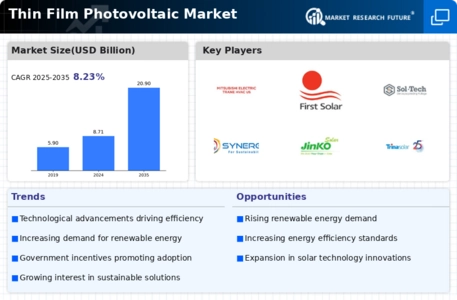
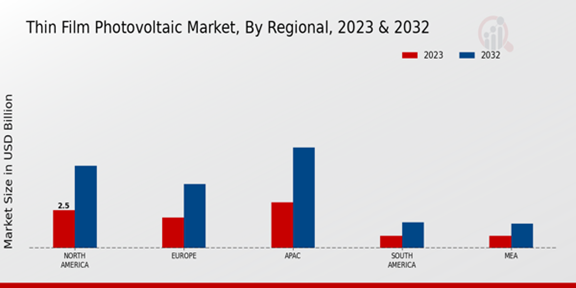
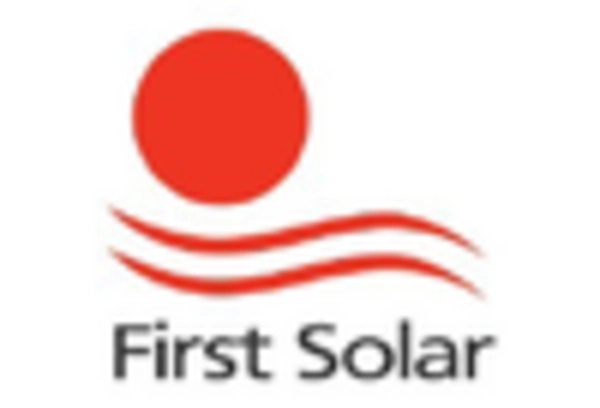
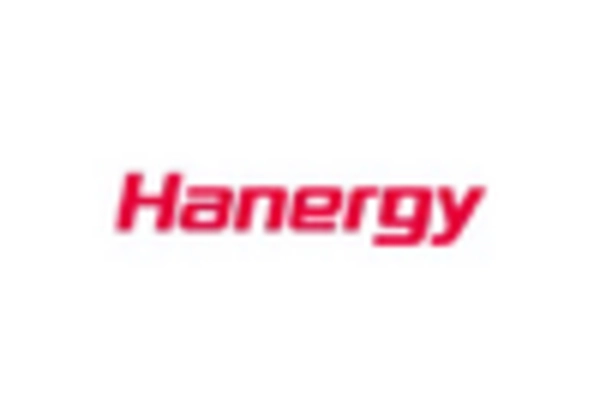
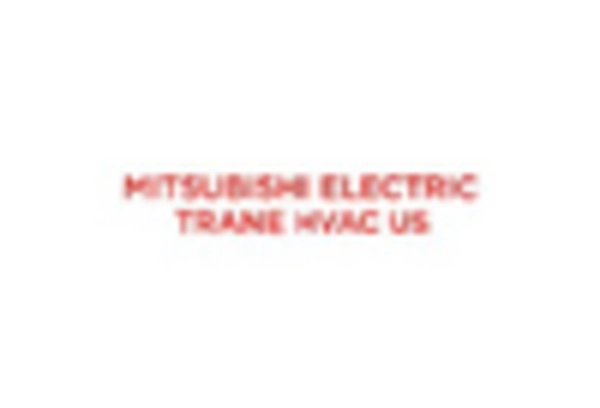




Leave a Comment